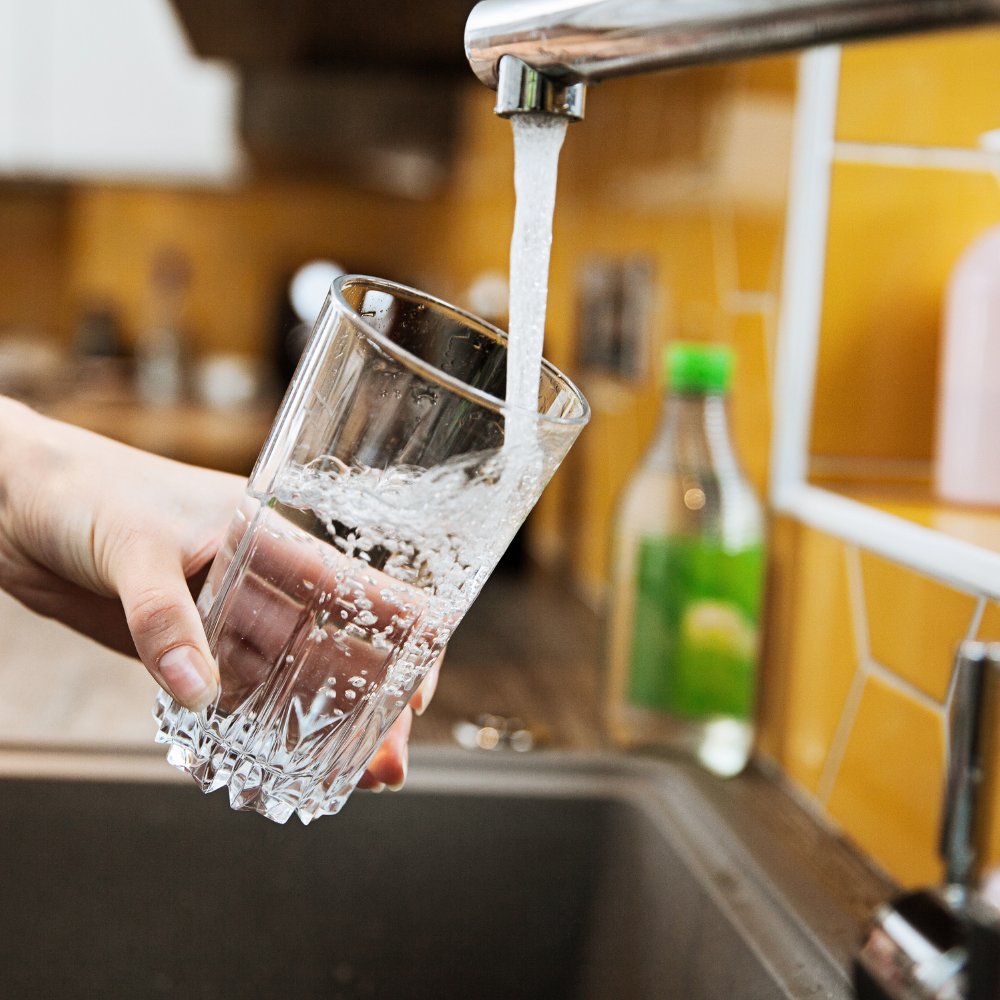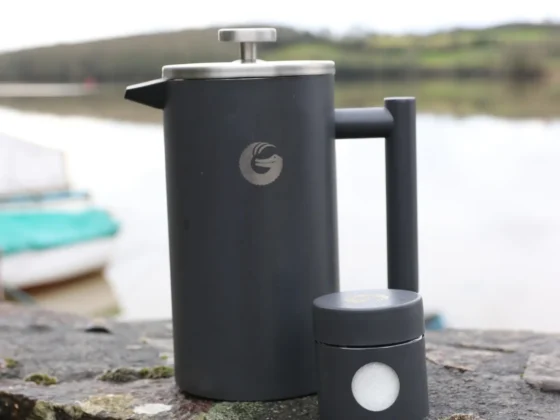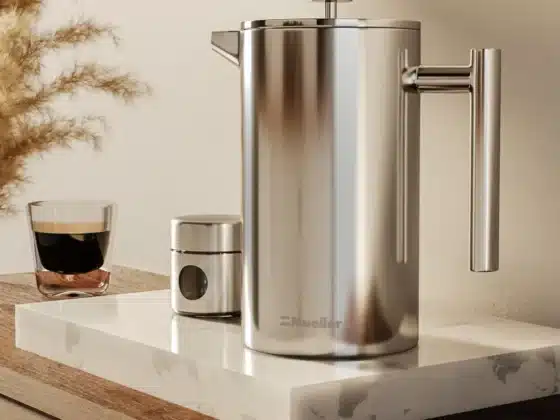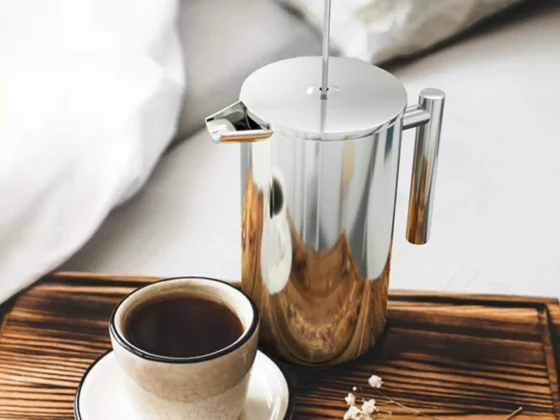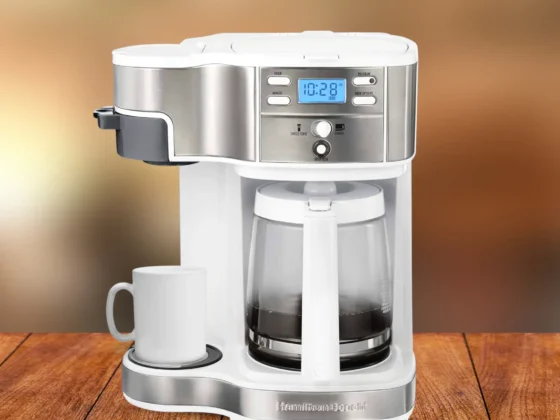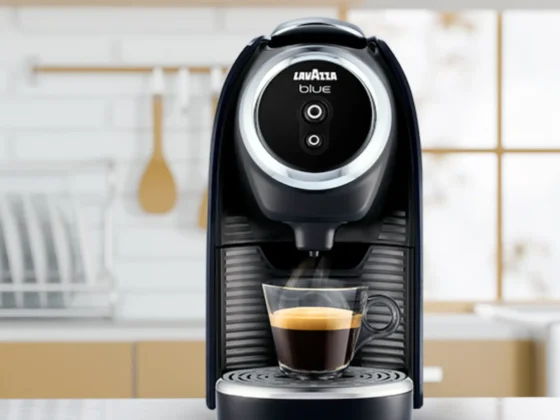For coffee enthusiasts, there’s nothing quite as satisfying as the rich, velvety texture of a well-made espresso shot, especially when it’s brewed using the best espresso machines right at home. The enticing aroma, the strong, complex flavors, and the intense caffeine kick make it a beloved choice for many across the globe. Indeed, the magic of espresso goes far beyond being just a morning pick-me-up; it’s the heart and soul of numerous other popular coffee beverages, from cappuccinos and lattes to Americanos and macchiatos.
Imagine enjoying this delight at any time, right in the cozy confines of your home. For many, this idea sparks an interest in exploring the world of home espresso coffee makers. This comprehensive guide is designed to empower coffee lovers like you with a thorough understanding of espresso machines. Whether you’re a curious beginner intrigued by the art of espresso brewing or a seasoned barista aiming to refine your skills, we’ve got you covered.
In this guide, we’ll delve into the intricacies of espresso machines, walk you through the selection process, share expert tips on mastering the art of espresso brewing, discuss maintenance and troubleshooting, and even explore ways to enhance your overall espresso experience. Whether you’re looking for an entry-level espresso maker or seeking to invest in a top-tier machine that’ll rival your favorite café, we aim to help you make an informed decision.
Ready to begin your journey toward brewing the perfect espresso at home? Grab a cup of coffee, get comfortable, and let’s explore the captivating world of espresso machines together.
Espresso Machines: Key Takeaway
- Understanding Espresso Machines: Knowing the history and mechanics of espresso machines, and the different types available (lever, semi-automatic, automatic, and super automatic) is essential for making an informed purchase and operating your machine effectively.
- Mastering the Art of Brewing: The choice of coffee beans, the right grind size, and the brewing process significantly impact the quality of your espresso. Mastering these elements can elevate your coffee experience.
- Maintenance is Crucial: Regular maintenance of your espresso machine, including daily cleaning and periodic descaling, can extend its lifespan and ensure consistently high-quality espresso. Understanding how to troubleshoot common issues can save you time and potential repair costs.
- Enhance Your Espresso Experience: The right accessories, creative espresso recipes, and knowing how to taste espresso can greatly enhance your coffee experience. These elements allow you to enjoy espresso like a pro.
- Top Espresso Machine Brands: Brands like DeLonghi, Breville, Jura, Gaggia, Rancilio, and La Marzocco have earned their reputation by consistently producing some of the best espresso machines in the market. Your choice of the brand can impact your espresso brewing experience and the longevity of your machine.
The Intricacies of Espresso Machines
Unraveling the intricacies of espresso machines takes us on an enlightening journey through history and mechanics, with a final stop at understanding the different types available today. Let’s dive in and explore these fascinating aspects of the beloved espresso coffee maker.
History and Evolution of Espresso Machines
The art of brewing coffee has been continually refined since its discovery centuries ago. However, the journey toward the perfect espresso took a significant turn with the invention of the espresso coffee maker in the late 19th century. The history of espresso machines is a tale of innovation, convenience, and the relentless pursuit of coffee perfection.
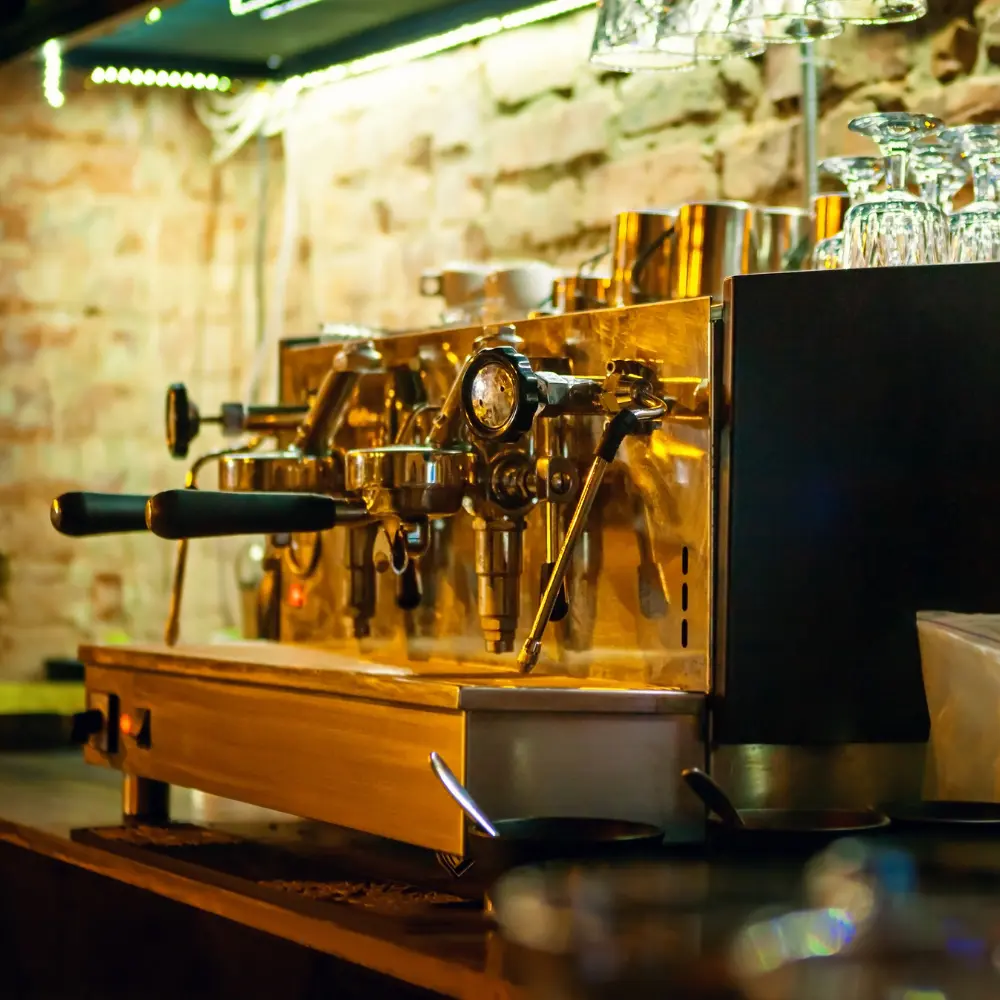
The first espresso machine was patented in 1884 by Angelo Moriondo of Turin, Italy. This massive, steam-powered machine was designed to brew coffee quickly for the attendees of the Turin General Exposition. Luigi Bezzera further advanced this design in the early 1900s by adding multiple brew heads and a mechanism to force hot water through the coffee grounds – a feature that defined espresso brewing. (1)
A breakthrough came in 1947 when Achille Gaggia introduced the first lever-operated espresso machine. This innovation replaced steam with a manual lever that baristas pulled to create a high-pressure shot of espresso, leading to the term ‘pulling a shot’. (2)
The evolution continued as espresso machines became increasingly automated over the decades. From manual levers to semi-automatic and then fully automatic models, the improvements were driven by the demand for consistency, efficiency, and user-friendliness. Today, the best espresso machines are often a blend of these historical innovations, designed to offer precision, convenience, and superior taste in every shot.
The Mechanics of Espresso Machines: How They Work
At the heart of every espresso machine is the basic principle of forcing hot water under pressure through finely ground coffee. However, the mechanics of how this is achieved varies depending on the type of espresso coffee maker.

An espresso coffee maker consists of several key components: a water source, a heating element, a portafilter to hold the coffee grounds, and a delivery system to dispense the espresso.
When activated, water is heated to the optimal brewing temperature, typically between 195 and 205 degrees Fahrenheit. The heated water is then forced through the portafilter holding the finely ground coffee. The pressure and heat extract the coffee’s flavors and oils, resulting in a rich, concentrated shot of espresso topped with a creamy layer of foam, known as ‘crema’.
Types of Espresso Machines: Lever, Semi-Automatic, Automatic, and Super Automatic

Espresso machines come in various types, each offering a different level of involvement in the espresso-making process. Your choice between them will largely depend on how much control you want over your brewing process.
- Lever Espresso Machines: These manual machines require the most skill but give you the highest level of control over your espresso. They require you to manually pull a lever to force the hot water through the coffee.
- Semi-Automatic Machines: Often considered the best espresso machines for home use, these allow you to control the grinding and tamping of your coffee, but the water pressure and temperature are automated. This strikes a balance between manual control and convenience.
- Automatic Espresso Machines: These coffee machines automate most of the process with making espresso. You still control the coffee grind and dosage, but the machine manages the water volume, pressure, and temperature.
- Super Automatic Machines: The epitome of convenience, these machines do it all – from grinding the beans to brewing the coffee. They’re perfect for those who want quality espresso with minimal involvement.
Understanding these different types of espresso coffee makers will help you appreciate the evolution of espresso brewing and aid you in selecting the espresso coffee maker that suits your taste, skills, and lifestyle best.
Mastering the Art of Espresso Brewing
Brewing a perfect espresso shot is a fine balance of art and science, involving multiple factors. From the type of beans you choose to the grind size and the actual brewing process, everything plays a vital role in determining the quality of the final shot. This section will take you through these critical steps and guide you on how to make espresso that rivals your favorite café’s offerings.
The Importance of Coffee Beans in Espresso Brewing
The first step towards brewing a remarkable espresso starts with the choice of coffee beans. Espresso coffee beans are typically a blend of different beans roasted to a medium to dark level. The right roast brings out a bold, rich flavor that can withstand the intense extraction process of espresso brewing.

Experimenting with different types of beans allows you to discover a variety of flavor profiles. You might prefer a single-origin bean for its unique taste characteristics, or a blend for a balanced and complex flavor. Either way, always opt for fresh beans and grind them right before brewing to maintain the highest level of flavor and aroma.
Grinding for Espresso: Why It Matters
Next comes the grind. The coffee grind size significantly influences the taste of your espresso. A fine grind is typically ideal for espresso as it increases the surface area, allowing for better extraction of flavors during the brewing process.

However, the grind shouldn’t be too fine, as it can lead to over-extraction and a bitter taste. Conversely, a grind that’s too coarse can lead to under-extraction, resulting in a weak and watery shot. This delicate balance is why many coffee connoisseurs invest in the best burr coffee grinders, which offer consistency and allow for precise grind size adjustments.
Step-by-Step Espresso Brewing Guide
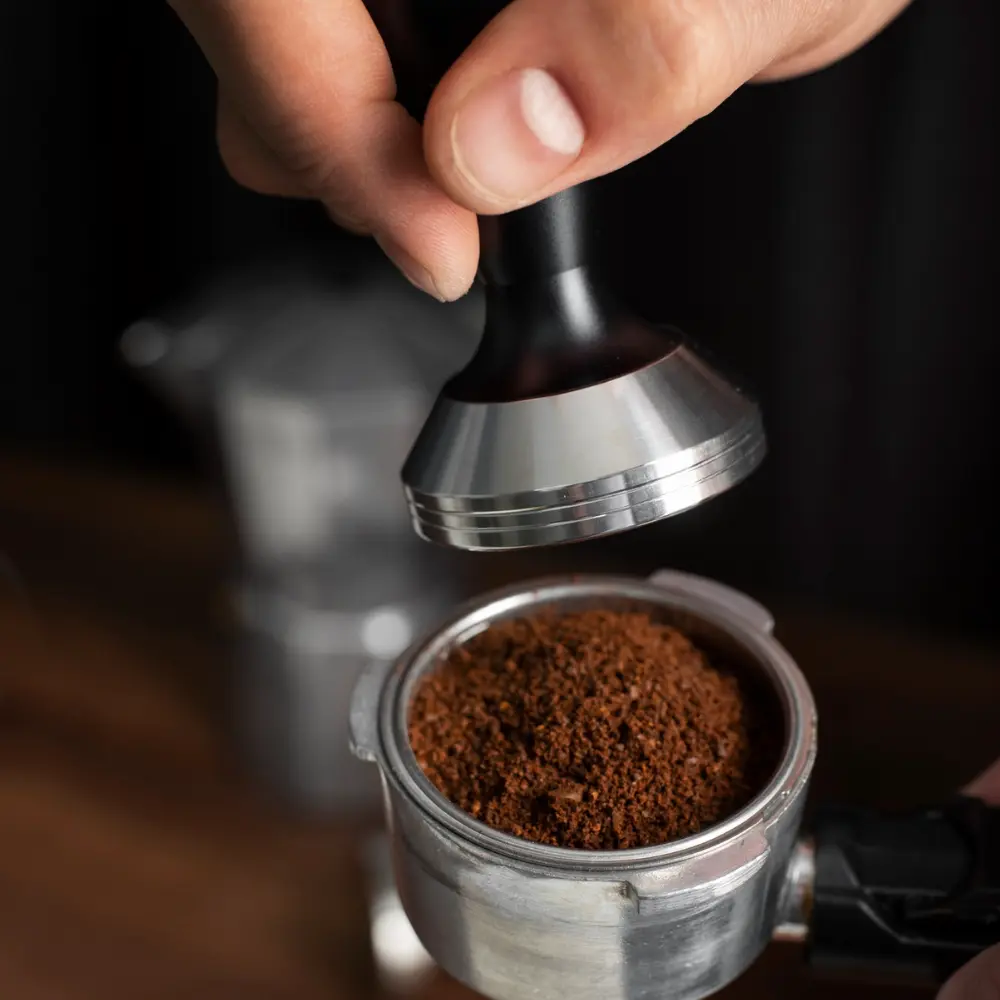
With the right beans and grind, you’re now ready to brew. While specific steps may vary slightly based on the type of espresso coffee maker you’re using, the general process remains the same:
- Measure and Grind the Beans: Start by measuring about 18-20 grams of coffee beans. Adjust the quantity as needed based on your machine and preference. Grind the beans to a consistency similar to fine table salt.
- Prepare the Espresso Machine: Ensure your espresso coffee maker is clean and warmed up. The portafilter and brew group should be hot to touch.
- Dose and Tamp: Add the freshly ground coffee to the portafilter. Tamp down the coffee grounds with moderate pressure, aiming for an even, flat bed of coffee.
- Pull the Shot: Attach the portafilter to your machine and start brewing. A good shot of espresso should take between 25-30 seconds to brew. You’re aiming for a shot with a rich, dark golden crema.
- Enjoy and Evaluate: Taste your espresso. If it’s bitter, try a coarser grind or a shorter extraction time. If it’s sour, try a finer grind or longer extraction time.
Mastering the art of espresso brewing is a journey of constant learning and adjustments. With every shot, you’ll get closer to that perfect espresso that suits your unique taste buds. Remember, practice, patience, and a love for coffee are the key ingredients in this exciting brewing journey.
Maintenance and Troubleshooting Your Espresso Machine

Just like any high-performance equipment, an espresso coffee maker needs regular maintenance to keep it in the best shape and ensure its longevity. Moreover, understanding common issues and knowing how to troubleshoot can save you a lot of time and prevent unnecessary damage to your machine. In this section, we will cover the essentials of maintaining your espresso machine, troubleshooting common issues, and understanding when professional help is needed.
Daily and Periodic Maintenance Tips
Proper maintenance is the key to prolonging the life of your espresso coffee maker and keeping it performing at its best. Here are some daily and periodic maintenance tips:
Daily Maintenance
- Clean the Portafilter and Basket: After each use, remove and rinse the Portafilter and basket. This prevents coffee grounds from clogging the filter.
- Backflush the Machine: If your machine is equipped with a three-way valve, backflushing it daily helps clear any coffee residue. Please refer to your machine’s manual to understand how to backflush correctly.
- Wipe Down the Machine: Wipe down your machine with a damp cloth to keep it clean and shiny.
Periodic Maintenance
- Descale the Machine: Over time, minerals in the water can build up and interfere with the machine’s function. Descaling the machine every 2-3 months can help maintain its performance.
- Clean the Steam Wand: Clean the steam wand after every use to prevent milk residue buildup. Every week, you should also remove the tip of the steam wand and clean it thoroughly.
- Replace Water Filters: If your espresso coffee maker has a water filter, replace it as recommended by the manufacturer.
Troubleshooting Common Espresso Machine Issues

Even the best espresso machines can encounter problems. Here are some common issues and potential solutions:
- Poor Quality of Espresso: This could be due to several factors such as the quality and freshness of your coffee beans, the grind size, or the machine’s calibration. Refer to the brewing section of this guide to perfect your technique.
- Machine Not Heating Properly: If your machine isn’t heating up, the heating element or thermostat might be faulty. Make sure the machine is plugged in and turned on. If it still doesn’t work, professional help might be required.
- Low Water Pressure: This could be due to a clogged filter or pump issue. Try descaling your machine, and if the problem persists, consult with a professional.
When to Seek Professional Repair Help
While some issues can be resolved at home, others require professional help. If you’ve tried troubleshooting without success, or if you encounter serious issues such as electrical faults, significant water leaks, or the machine not turning on at all, it’s time to seek professional help. Regular servicing by professionals can also be beneficial to keep your espresso coffee maker in the best possible condition, especially if you’re using it heavily.
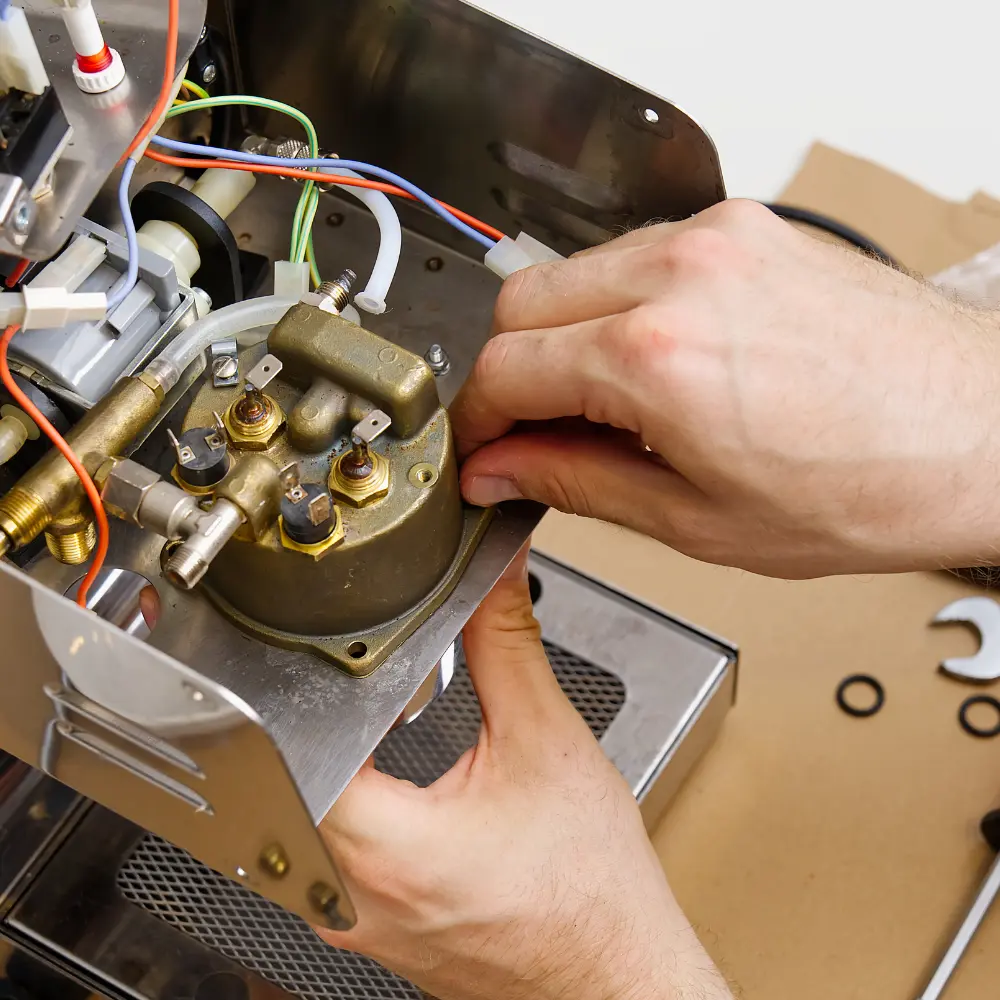
Remember, a well-maintained machine can serve you for many years, providing countless perfect espresso shots and adding to your overall coffee enjoyment.
Enhancing Your Espresso Experience
While owning an espresso coffee maker is the first step to a delightful coffee experience, there’s so much more to explore in the world of espresso. The right accessories can enhance your brewing process, trying out creative recipes can add variety to your coffee routine, and knowing how to taste espresso will elevate your appreciation for this coffee variant. Let’s delve into these aspects and find out how you can take your espresso experience to another level.
Must-Have Accessories for Your Espresso Machine
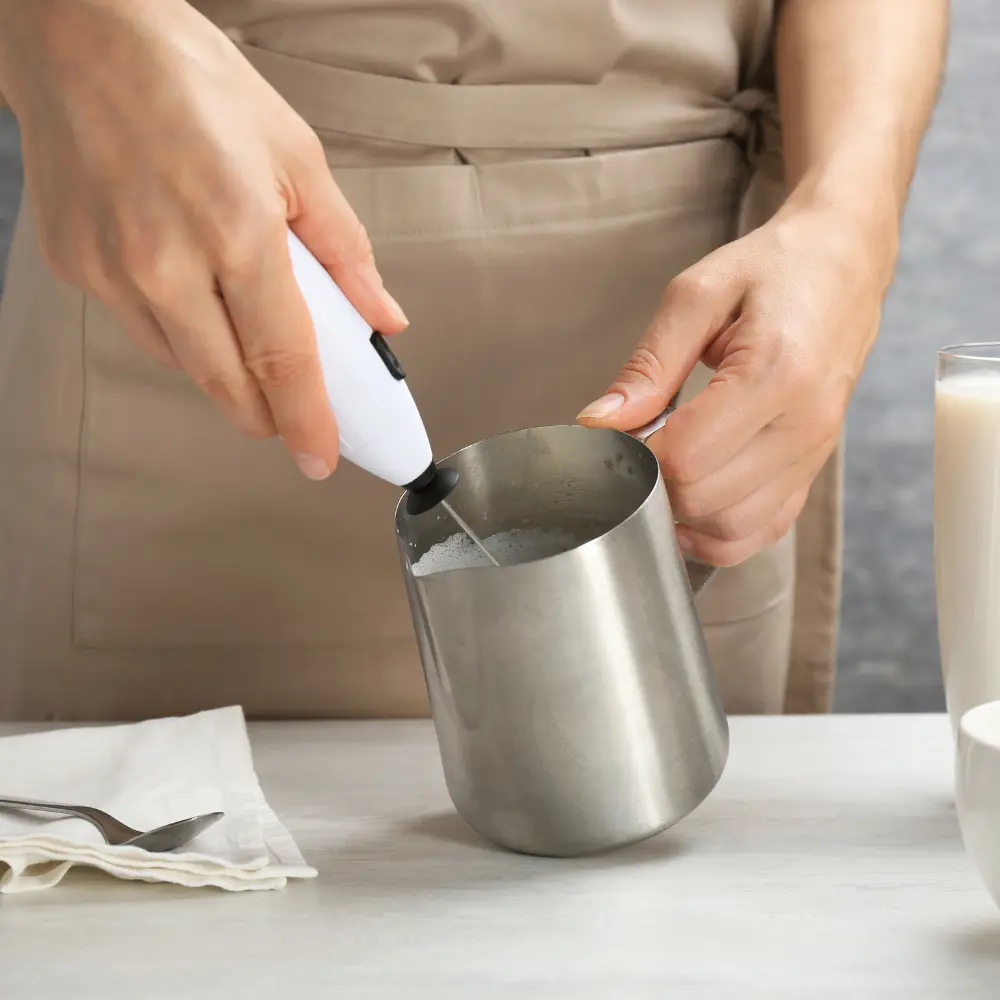
Certain accessories are vital for making the most out of your machine. Here are a few must-haves:
- Burr Coffee Grinder: As mentioned before, a burr coffee grinder is indispensable for achieving the consistent, fine grind needed for espresso. Unlike blade grinders, burr grinders crush the beans uniformly, which helps in the optimal extraction of flavors.
- Tamper: A tamper is used to press down the coffee grounds in the portafilter, creating an even surface for the water to pass through. A well-tamped coffee bed ensures uniform extraction, which is crucial for a great-tasting espresso.
- Knock Box: A knock box provides an easy and mess-free way to dispose of used coffee grounds.
- Milk Frother: If you love milk-based coffee beverages like cappuccinos and lattes, a milk frother is a must. It helps you create the creamy, frothy milk that tops these beverages.
- Espresso Cups: The right cup can make a difference in your espresso experience. Espresso cups, also known as demitasses, are small cups that keep your shot at the perfect temperature. (3)
Creative Espresso Recipes to Try at Home

Having an espresso coffee maker opens up a world of delicious coffee recipes you can try at home. One all-time favorite is the Espresso Martini. Here’s a simple espresso martini recipe:
Ingredients:
- 1 shot of espresso
- 1.5 oz of vodka
- 1 oz of coffee liqueur
- Ice
Instructions:
- Brew a shot of espresso and let it cool.
- Fill a cocktail shaker with ice.
- Add the cooled espresso, vodka, and coffee liqueur to the shaker.
- Shake well and strain into a martini glass.
- Enjoy your homemade espresso martini!
Explore more recipes and experiment with different ingredients to create your unique espresso beverages.
How to Taste Espresso Like a Pro

Drinking espresso is an experience meant to be savored. Here’s a simple guide on how to drink espresso and truly appreciate its complex flavors:
- Look: Examine the shot. A good espresso should have a layer of crema on top – a creamy, golden-brown foam formed by the high-pressure extraction process.
- Smell: Bring the cup to your nose and take a deep breath. You should be able to smell a rich, strong coffee aroma.
- Taste: Take a small sip. Let it coat your tongue before swallowing so you can taste the full range of flavors. A well-brewed espresso should taste balanced, not overly bitter or sour.
Remember, the world of espresso is a vast one to explore and the journey is just as enjoyable as the destination. Whether you’re perfecting your brewing skills, creating delightful coffee recipes, or simply savoring the taste of a well-made espresso, each moment adds to your unique coffee experience.
The Elite Five: Unveiling the Best Brands in the Espresso Machine Arena
For a coffee enthusiast, choosing an espresso coffee maker can be a significant investment. With so many brands promising the perfect shot of espresso, it can be a daunting task to decide on the one that suits your needs the best. This section is dedicated to highlighting the top five espresso machine brands that have consistently received rave reviews for their superior functionality and quality.
The Italian Maestro: DeLonghi Espresso Machines
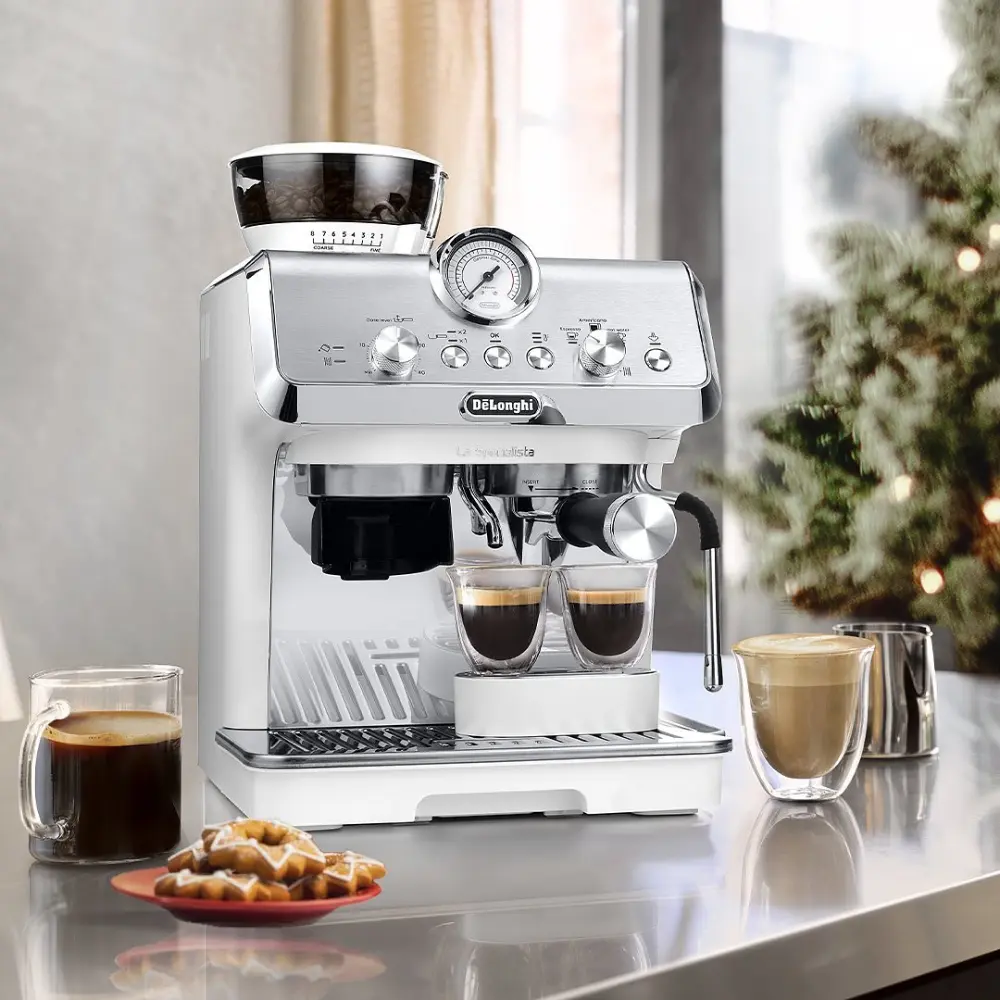
When it comes to espresso machines, DeLonghi is a name synonymous with Italian design and quality. From entry-level models to high-end fully automatic machines, DeLonghi espresso coffee makers are known for their easy-to-use interface, durability, and, most importantly, the ability to brew an excellent espresso shot.
The Game-Changer: Breville Espresso Machines
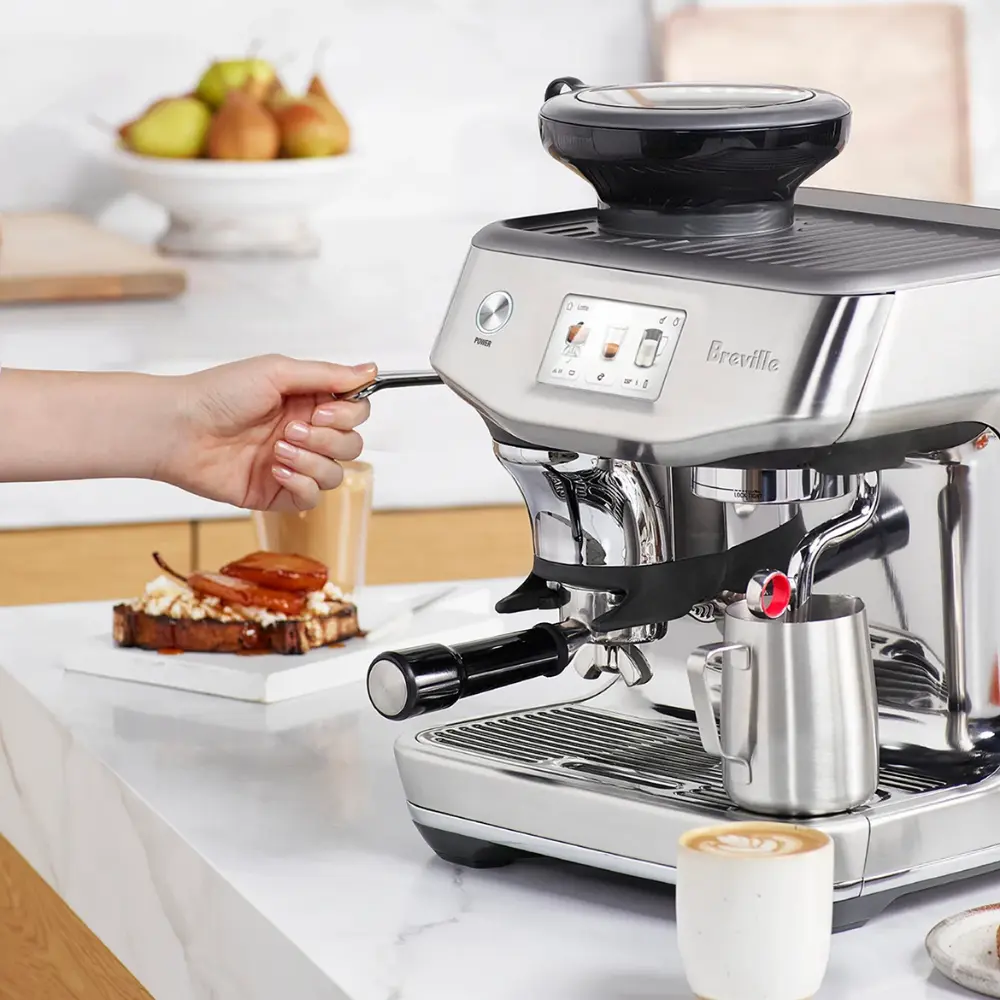
Breville has revolutionized home espresso brewing with its innovative features and user-friendly designs. Whether it’s the precise temperature control, the grind size customization, or the automated cleaning system, Breville’s range of espresso coffee makers is designed with the user in mind, providing an unmatched coffee-making experience.
The Innovation Pioneer: Jura Espresso Machines
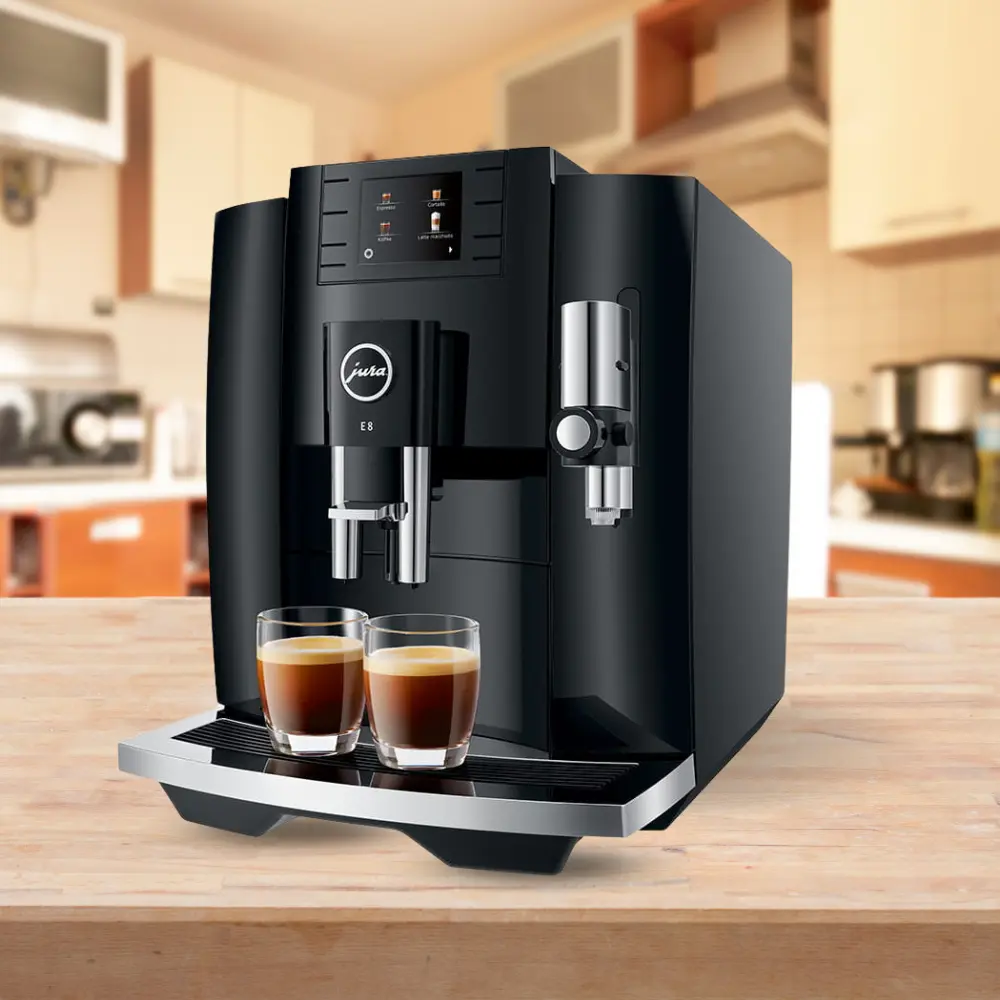
If you’re looking for sophistication and innovation, Jura brewers are hard to beat. Jura’s machines are renowned for their advanced technology, sleek design, and automatic brewing features, making them one of the best espresso machines for those who desire convenience without compromising on quality.
The Traditionalist: Gaggia Espresso Machines
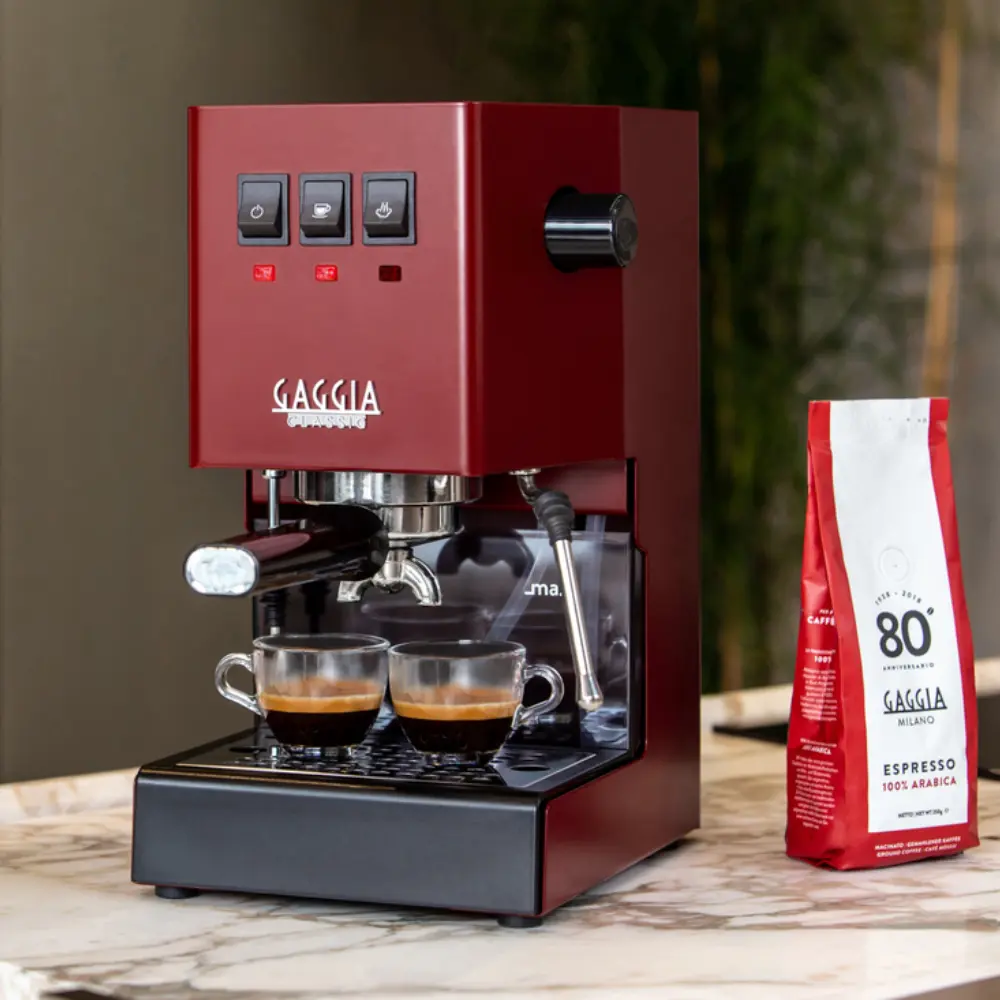
Gaggia, the brand behind the invention of the first modern espresso machine, remains a respected name in the coffee world. Their machines stand out for their quality craftsmanship, classic design, and authentic espresso-making experience, making them a favorite among traditional espresso lovers.
The Master of Consistency: Rancilio Espresso Machines

Rancilio is a brand that prides itself on bringing professional-grade features to home espresso coffee makers. Known for their robust build, precise controls, and consistent performance, Rancilio machines are the go-to choice for serious home baristas.
Remember, the best espresso machine for you depends on your personal preferences, skill level, and budget. Whether you choose DeLonghi, Breville, Jura, Gaggia, or Rancilio, each of these brands offers a unique espresso experience that can elevate your coffee journey.
The Encore: La Marzocco Espresso Machines
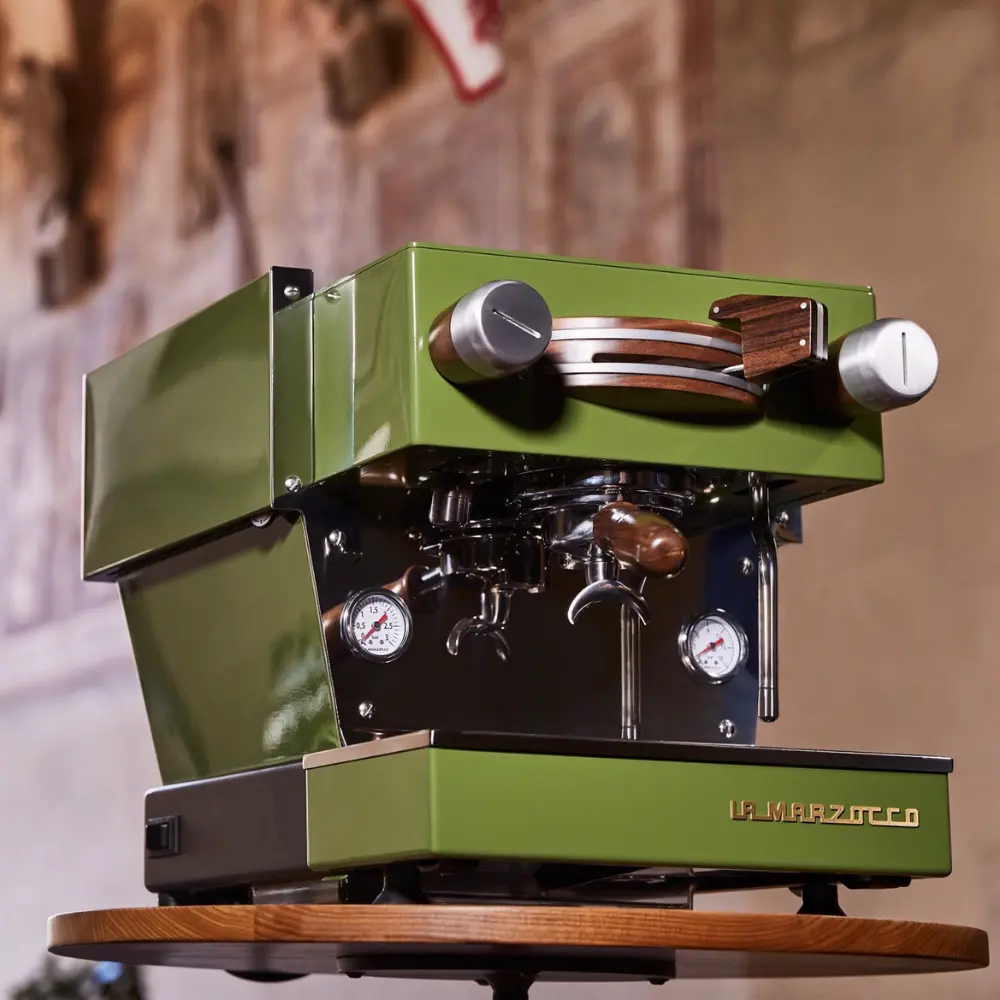
No exploration of espresso machine brands would be complete without acknowledging the profound impact of La Marzocco. Originating from Florence, Italy, this brand has been a prominent player in the espresso world since 1927.
La Marzocco machines are the very epitome of Italian craftsmanship and excellence. These professional-grade machines grace many high-end cafes and are often the first choice of champion baristas. Known for their robust construction, exceptional temperature stability, and timeless design, La Marzocco espresso machines are truly a testament to the rich heritage of espresso brewing. They represent an investment in extraordinary espresso moments at home, satisfying even the most discerning coffee connoisseurs.
Conclusion: Your Journey to Espresso Excellence
Embarking on the journey to understand espresso machines can be a fascinating experience, paving the way for countless delightful coffee moments. From understanding the intricate mechanics behind your espresso coffee maker to diving into the rich history of espresso, every piece of knowledge contributes to your overall coffee appreciation.
Choosing among the best espresso machines is a crucial step in this journey, and we hope our exploration of top brands like DeLonghi, Breville, Jura, Gaggia, Rancilio, and La Marzocco has been helpful. Yet, remember that owning an espresso coffee maker is just the beginning. Mastering the art of brewing, maintaining your machine, enhancing your espresso experience, and exploring creative recipes – all these elements come together to shape your unique coffee journey.
As we conclude our comprehensive guide, we hope you feel equipped to make the most of your espresso coffee maker and explore the enchanting world of espresso with confidence and joy. After all, every sip of espresso you savor isn’t just a beverage; it’s an experience, a moment of indulgence, and a celebration of the rich culture of coffee.
FAQ
How does an espresso machine work?
An espresso machine works by forcing pressurized hot water through a "puck" of tightly packed coffee grounds. This high-pressure extraction process yields a concentrated coffee drink known as espresso.
How to choose the best espresso machine for home use?
Choosing the best espresso machine for home use depends on your coffee preferences, skill level, and budget. Consider factors like ease of use, machine type (manual, semi-automatic, etc.), and the machine's features and capabilities.
How to clean and maintain an espresso machine?
Regular cleaning of your machine involves wiping down the machine, cleaning the portafilter and basket, and purging the group head. Periodic descaling is also necessary to remove mineral build-up. Always consult your machine's user manual for specific instructions.
What are some creative espresso recipes to try?
Some creative espresso recipes include the classic espresso martini, affogato (a shot of espresso poured over a scoop of vanilla ice cream), and various flavored lattes, such as caramel or hazelnut. Experimenting with different ingredients and flavors can lead to your unique creations.






























